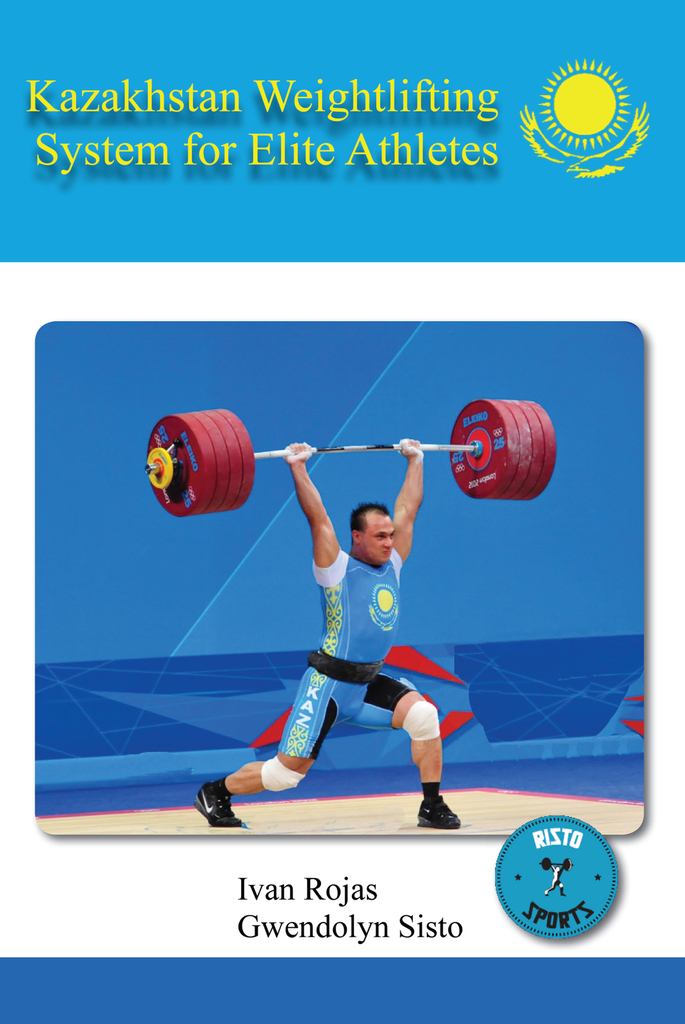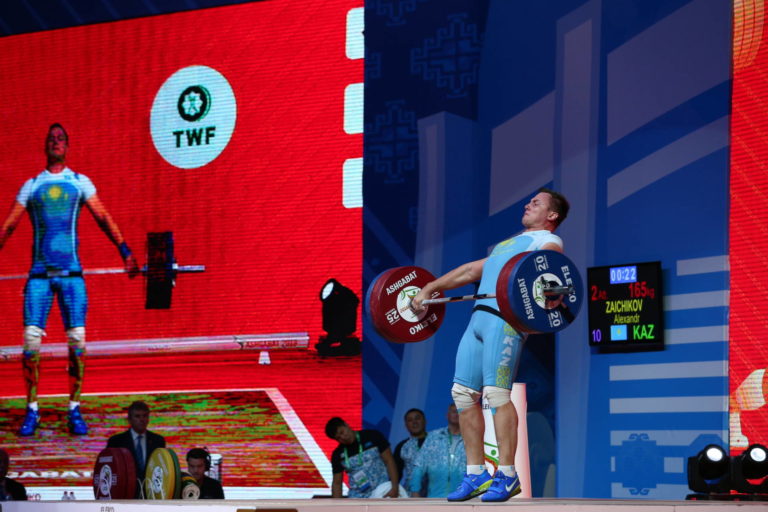STRENGTH SENSEI BOOKSHELF
Kazakhstan Weightlifting System for Elite Athletes
Insights into a controversial weightlifting system
Before the 2012 Olympics, Kazakhstan never produced an Olympic champion in weightlifting. In 2012, four of their lifters won gold. Ivan Rojas and Gwendolyn Sisto visited Kazakhstan and studied their training methods. They wrote about their observations in the Kazakhstan Weightlifting System for Elite Athletes.
What this book offers are some interesting insights into how to identify weightlifting talent, how to train young athletes, how a government can promote a sport, and the role of specificity in training elite weightlifters. However, the workouts described for elite Kazakhstan athletes come with an asterisk.
Many weightlifters from Kazakhstan failed doping control a decade ago, and it’s clear why they needed to take steroids when you see the workouts then performed. Even the most genetically gifted athletes would have trouble performing and recovering from, the volume and intensity levels their coaches prescribed. Consider this Monday workout during a “high intensity” training week:

10 am – front squat up to 100 percent of 1 repetition maximum (1RM)
11 am – snatch up to 85%
Noon – clean and jerk up to 90%
4 pm – snatch up to 90%
5 pm – clean and jerk up to 100%
6 pm – front squat up to 100%
8 pm – snatch up to 85%
10 pm – clean and jerk up to 85%
This ultra high-intensity, day-long schedule is repeated on Tuesday, Wednesday, Thursday, Friday, and Saturday! And it’s not that these other workouts are light to allow for full recovery. For example, during this training week front squats are performed in nine training sessions with every workout using at least 90 percent of an athlete’s 1RM. Impossible to follow with doping? Unquestionably. But just as we marvel at the workouts and physiques of today’s top bodybuilders (many who admit to using gear), it’s fascinating to see what these lifters could endure and thrive on.
That warning aside, what are the takeaways that drug-free weightlifting can learn from Kazakhstan Weightlifting System for Elite Athletes?
First, the Kazakhstan system is based upon the Soviet Weightlifting System. One characteristic of the Soviet system is that athletes begin at a young age, and talented athletes are paid well. Rojas and Sisto note that it is expected that athletes using this system will reach Master of Sport level by the age of 18 and have trained for at least eight years. The athlete on the cover of this book, Ilya Ilyin, began at age eight, and the book has a photo of an eight-year-old girl performing snatches in a Kazakhstan training hall.
One of the characteristics of Kazakhstan’s youth program is an emphasis on high volume and (compared to senior lifters) low intensity. As a general guideline, youth athletes train five times a week and are only permitted to go to 100 percent on a Friday.
A typical training percentage for the youth lifters is 80 percent of the 1RM, and one common set/rep prescription at this percentage is seven sets of three reps. In a month, the total number of reps performed per week will range from 500 to 700.

With all the Kazakhstan workouts, consider that although a high number of sets are performed during a training day, the time under tension (TUT) the muscles are placed under is relatively low. Coach Poliquin has mentioned in his writings that because the TUT of an Olympic lift is so brief, more repetitions can be performed. Thus, 10 sets of 1 rep in a power snatch has a much lower TUT than one set of 3 reps in the back squat with a 4010 tempo (10 x 1 = 10 seconds TUT vs 3 x 5 seconds = 15 seconds TUT).
Squats are performed every day, usually twice a day, but the emphasis is on front squats rather than back squats. This is in agreement with legendary Bulgarian coach Ivan Abadjiev, who during his later years of coaching said that the back squat was not relevant to elite lifters. One of Abadjiev’s athletes was Naim Süleymanoğlu, considered pound-for-pound the greatest weightlifter of all time. During an interview in 1988, Süleymanoğlu told one reporter that back squats were “not specific.”
Another important aspect of the Kazakhstan system was recovery. Their methods included massage, sauna, and nutritional supplements, including amino acids and vitamins.
Coach Poliquin often said that “Success leaves clues,” and one clue to the success of the Kazakhstan system is to “follow the money.” In Kazakhstan, well-equipped training halls are provided, and coaches are paid. Athletes are paid monthly salaries based on their accomplishments. The authors heard that a world champion would receive a monthly salary of $10,000 and an Olympic gold medalist would receive $500,000, an apartment, and a car.
The Kazakhstan Weightlifting System for Elite Athletes is not a how-to book about becoming a champion weightlifter but offers some valuable insight into what it takes for any athlete to succeed in the sport. It’s certainly not a “first-choice” for a weightlifting library, but eventually, it could deserve a place on your bookshelf.
As doping control has become more sophisticated, we can assume that the elite workouts followed by Kazakhstan lifters in this book have been scaled down. However, there is still much to be gained by studying how elite lifters of the past achieved success. (TS)
[You can purchase Kazakhstan Weightlifting System for Elite Athletes by Ivan Rojas and Gwendolyn Sisto through Amazon.com.)
